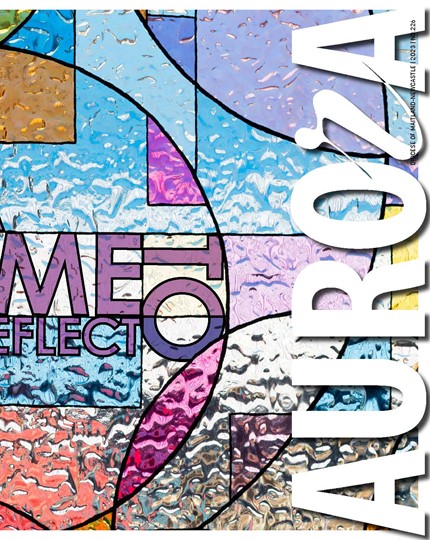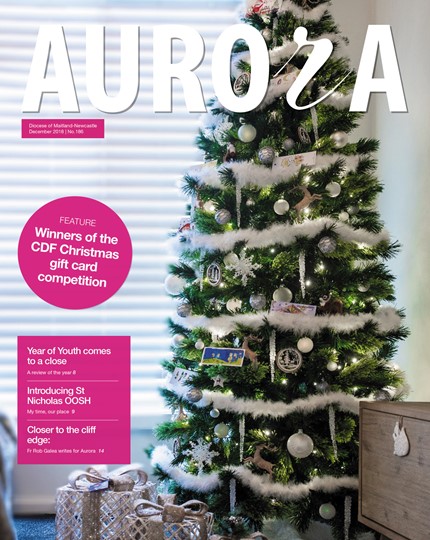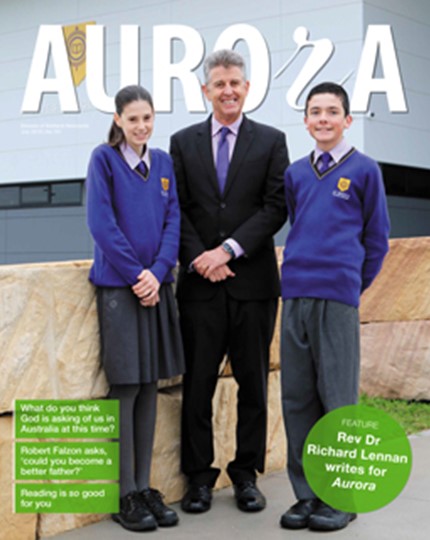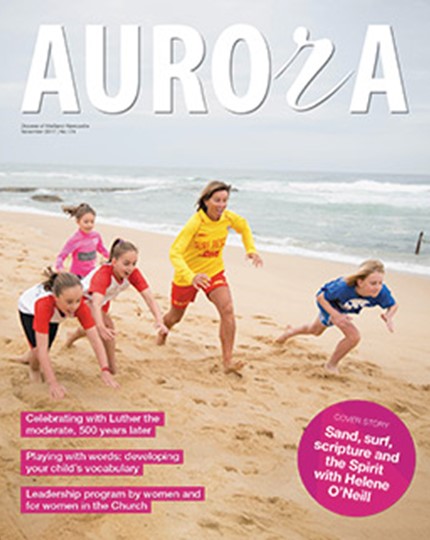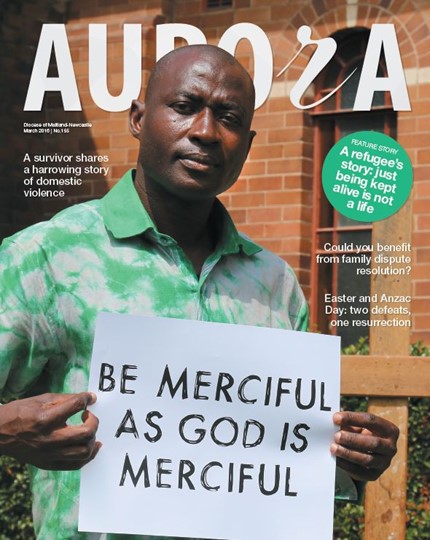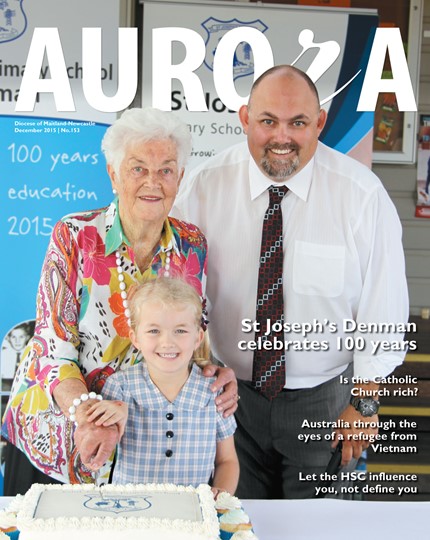Members of the Order of Preachers − Dominicans − around the world have begun a year of celebration marking the 800th anniversary of the official approval of the Order by Pope Honorius III in December, 1216. This celebration coincides with that of the extraordinary Jubilee Year of Mercy announced by Pope Francis - how fitting that our founder, Dominic de Guzman, prayed frequently, “My God, my Mercy”, asking God to give him and his followers eyes of deep compassion to see the world so that they might become reflections of divine mercy in every situation.
The solemn opening of the Dominican Jubilee took place on the Feast of All Saints of the
Order (7 November 2015) at Santa Sabina Basilica, Rome, within the Eucharist − a celebration of the whole Dominican Family not only in Rome but locally in other countries and regions of the world.
Sister Ann Keys OP and I had the privilege of travelling to Rome to represent our Australian Dominican Family at the celebration. We were advised to arrive very early to get a seat. This we did and were amazed to see the gold carpet for the occasion still in the process of being laid! About 1,000 participated in the celebration with many being Italian Sisters who were so intent on rejoicing in each other’s company, getting ‘good’ seats and taking photos that they were totally unaware of our presence. Despite our initial efforts to greet some of them, the only contact was their crawling over us time and again to get to the aisle for the best photos! We, however, relished being part of the international celebration and remembered in prayer everyone at home knowing that our own celebration at Santa Sabina, Strathfield, would also be very special.
Despite experiencing the culture of our Italian Dominican Sisters for the first time, the Eucharist being celebrated in Italian except for the First Reading and the General Intercessions, it was a deeply moving religious experience. The singing, especially of the Jubilee Hymn, was uplifting while the Ritual of Light and the Entrance Procession of 100 Dominican Friars from different countries, some Dominican Sisters and Nuns together with lay members of the Order, were truly inspiring.
At the conclusion of the Eucharistic celebration everyone received an 800 Year Jubilee souvenir of
Rosary Beads and a little booklet of the Nine Ways of Prayer of Dominic. Then we all spilled into the convent cloisters to share what appeared to be a beautifully festive supper. As people were five deep getting to the tables and not wishing to be jostled in the crowd, we took our chance when the opportunity presented itself to enjoy a slice or two!
During supper Ann, determined to speak to the Master of the Order, Bruno Cadore, whom she had met when he visited Australia in 2014, finally managed to reach him and let him know we were there from Australia. He was delighted we had come so far and was happy to have a photo with us to bring home. At that moment our Italian Sisters swooped! A very tall Dominican Friar saw our plight and took the photo for us from above the mayhem that ensued.
It was a wonderful celebration – although different from our Australian way − concluding with a concert back in the basilica.
The celebration of this 800 Year Jubilee brings me to marvel that for eight centuries the legacy of Dominic has been transmitted from one culture to another during the extraordinary historical changes and is even now being given new expression in our own times. What was the charism, the favour, with which Dominic was gifted by the Holy Spirit?
To identify and describe the Dominican charism or gift involves discovering who and what manner of man Dominic was, the kind of world he inhabited and his response to the needs of the time.
DOMINIC DE GUZMAN (1170 - 1221)
Dominican friar and writer, Simon Tugwell, tells us Dominic was a man of deep joy and compassion, always cheerful and companionable. He wanted his followers to use time profitably as the occasion presented itself rather than make time by legislation or rigid discipline − flexibility and spontaneityare hallmarks of Dominic’s way. Dominic was eminently approachable and lovable, frank in his dealings with others and firm in taking decisions.
He was passionately devoted to the Church and to the truth of the gospels, sensitive to real values which could be found in movements on or beyond the fringe of the official Church. He was a man “present to God”, “present to the world” and in touch with his times.
He was a coy saint hiding behind the works which live after him and the ideals he prompted others to follow. His individual personality made less impression on the Church’s memory. He is like a signpost pointing away from himself - the Church may forget such saints as individuals but it cannot escape for long the ideas for which he stood. He lives on in the Church not as a striking individual but in the work of preaching the gospel, for which he instituted his Order.
THE WORLD OF DOMINIC DE GUZMAN - 13TH CENTURY EUROPE
The thirteenth century was a time of transformation in the world and in the Church. There was a movement from a rural to an urban culture accompanied by the rise of universities and the mobility of students and merchants bringing new ideas from the East, together with a kind of mutation in the whole economic process.
The Albigensian heresy, based on the double principle of good and evil at the moment of creation, was widespread and ravaging Europe. People were being taught that all life on earth, indeed everything material, was evil, and that only the life of the spirit was good. The official Church was very much in disarray. Clergy and religious were acquiring wealth and power, living lives of affluence rather than bringing the Gospel to the people. The Albigensians, on the other hand, preached by word and the austerity of their lives.
DOMINIC’S RESPONSE TO THE NEEDS OF HIS TIME
As Dominic, a Canon of St Augustine, travelled with his bishop through southern France he became acutely aware that the Word of God was not being preached well or forcefully. To be loyal to his original choice of life as a canon of St Augustine, when confronted with these new needs, he had to change his direction and begin a new way of life. It was Dominic’s charism to begin to do something about the situation.
The compassionate Dominic began his innovation and inheritance by welcoming a group of marginalised women. He made their prayer and welcoming of other disowned Albigensian women the basis for his preaching outreach. He began by relating to people, by being pastorally present, by accompanying them and listening to their stories. They first preached their reality to him, thus he contemplated with others, listened to them and took his place on the side of those struggling for meaning in life.
The public charism that was to flower out of Dominic’s compassion was a passion for truth that must find voice and be proclaimed. It cannot stay silent in the face of human injustice.
We find in Dominic’s response to the needs of men and of women his time the critical reflection which is the hallmark of the Dominican charism. This ‘critical reflection’ enabled him to recognise that what was needed to preach the gospel to his contemporaries was something entirely new. This radical “new thing” conceived in the mind of Dominic was quite revolutionary, for at that time those who wandered around begging and preaching were largely members of heretical groups. ‘Serious religious’ were supposed to stay in one place. Dominic and his followers saw themselves firstly as followers of Christ preaching the gospel in the manner of Jesus and the apostles and living a mendicant, itinerant lifestyle. This was Dominic’s unique vision − his charism. Thus with his followers he founded the Order of Preachers.
A contemporary Dominican theologian, Edward Schillebeeckx, is quick to remind us that to be faithful to the Dominican story today we are called to live life contemplatively, critically appraising what is happening in our society and engaging in the quest for truth that leads to justice, peace and freedom. Our response to this challenge will determine whether the charism bequeathed to Dominic is kept alive in the Church for future generations.
You may wish to visit www.opeast.org.au







